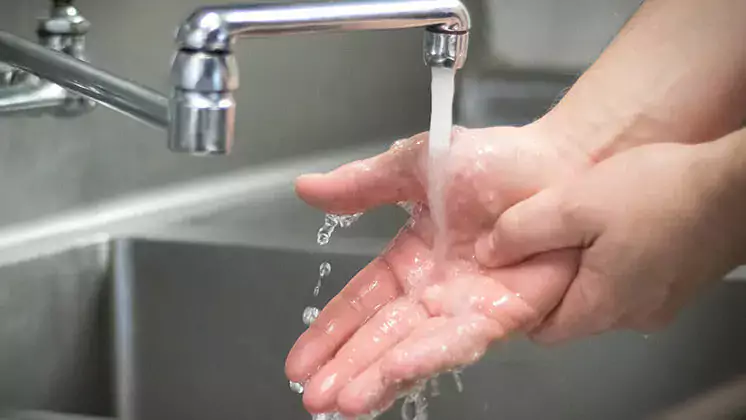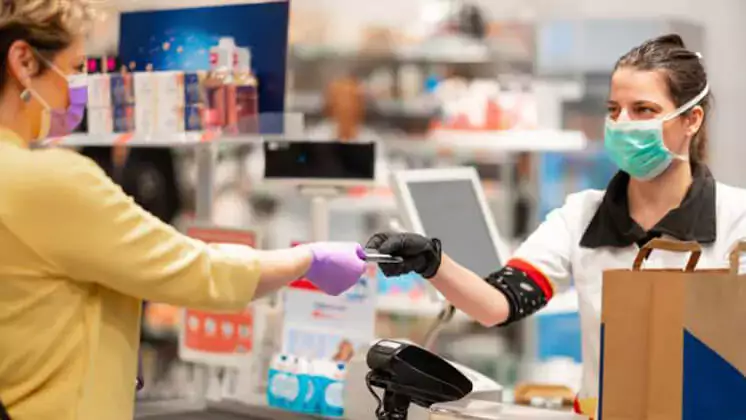Our CEO, Vladik Rikhter, recently had the pleasure of speaking with former CDC researcher and Public Health Expert, Dr. Hal King, about reopening restaurants safely and the role operational agility will play in doing so. You can view the full webinar replay here or read on some highlights on what was covered.
What Multi-Unit Operators are Doing in Response to the COVID-19 Outbreak
In observing the restaurant industry today, we’ve noticed that multi-unit operators have prioritized the following items:
- Rolling out new cleaning and sanitation processes
- Employee screening and symptoms reporting
- Enforcing compliance with remote field teams
- Converting operations to take-out and delivery
While 23% of our attendees said they were not opening up any of their restaurants at this time, 36% of our attendees stated they were starting to open up 75%-100% of their restaurants to dine-in service. With this percentage, these initiatives listed above are crucial to the safety of not only employees, but customers as well.
Dr. Hal believes that wearing masks and gloves can help with ensuring the health of employees -- which is key to keeping everyone safe and protecting customers from potential viruses.
Designing Employee Wellness Checks and Sanitization Procedures
Employee wellness checks and sanitization procedures have been in place for a while to monitor employees for vomiting or illnesses that could be a potential hazard to being around food and other employees/customers. Dr. Hal discusses how the biggest questions are when to exclude that employee from the work schedule as well as when to bring them back.
He adds that having a sick log and tracking these symptoms is the best way to make sure a sick employee doesn’t prematurely return to work and to ensure compliance with CDC/FDA guidelines to mitigate liability.
What Steps Should be Taken to Ensure Every Location is Complying with Safety Procedures?
In a poll conducted during the webinar, only 10% said they were very confident that their restaurants were in compliance with new/updated procedures that were being rolled out. 28% said they were confident, 44% said they were semi-confident, and 18% said they were not confident at all.
Dr. Hal talks about the importance of having a food safety process like HACCP (Hazard Analysis Critical Control Point). This provides actionable measures of control of food safety in a restaurant environment which comes down to having a food safety management system or systems in place. For example, having standard operating procedures (SOPs) defined and people trained on how to perform those things (i.e. how to prepare the food, where do you source the food from, etc), a process to monitor those things every day during food prep, and having a food safety manager (or certified food protection manager) who is equipped to do corrective actions to make sure all processes are being followed correctly.
Dr. Hal says using technology is key to helping you set reminders to check those food safety processes so you can monitor contributing factors to food borne illnesses, measure the risk, and correct items as they happen. With constantly changing rules and regulations to make food safely, Dr. Hal says technology can help you to stay informed, updated, and ensure those changes are being made and your restaurant is in compliance with these new guidelines so you can keep focus on running the business, ensuring customers are having the best experience possible.
How Has Food Safety Practice Rigor Prepared Us to Address the Coronavirus Pandemic?
In the webinar, Dr. Hal says those who have already been accustomed to a rigorous food safety protocol have been more prepared for the Coronavirus pandemic because instead of scrambling to implement a process to begin with, they’re thinking of ways to enhance the procedures they already have.
He reiterates that having the HACCP process in place helps restaurants with preparedness during outbreaks like Coronoavirus.
How Do We Remain Agile, Updating Processes Based on Evolving Best Practices and Federal/State/Local Regulations?
In another webinar poll, it was revealed that it takes 40% of attendees about a month to roll out a new procedure across their operations. In comparison, 17% said it takes more than a month, 30% said it takes about a week, and only 13% said it takes about a day.
During these times where restaurants have had to quickly change from dine-in services to take-out and delivery, the ability to update guidelines and processes across locations is crucial to staying in business. As Dr. Hal said earlier, having the technology to stay informed and updated of certain changes can be super beneficial in keeping your restaurants in compliance with quick action.
Dr. Hal also discusses how having a HACCP process in place can be crucial to avoiding a food safety outbreak when updating or adding menu items. He gives the example of a restaurant selling freshly baked cookies and potentially using the same cookie dough to make a milkshake. High level this seems like a great idea and adds an extra menu item to the mix without carrying new inventory, however, without a HACCP plan in place, the restaurant could overlook that the cookie dough is not heat treated and could potentially get someone sick, or worse could kill someone, from e coli. A simple food safety process could mitigate that risk.
In relation to Coronavirus, Dr. Hal says being able to quickly adjust SOPs based on guidelines from federal, state, or local governments is crucial to getting rid of any gaps that could cause any public health incidents. He also talks about how implementing these systems will help restaurants adapt to changing menus or training in the future across the board and now is the time to implement those procedures.
Longer Term, How Has the Pandemic Changed the Restaurant Industry?
Dr. Hal closes by reiterating how important it is to continue with certain procedures like employee wellness checks, personal hygiene systems, proper glove use, hand washing, proper cleaning and sanitation procedures, and having a food safety management system in place that ensures all these things are being done. He says these preparations are things the restaurant industry should be thinking about now more than ever so that we are better prepared for the future.
If you would like to watch the recording of this webinar, you can watch it here. Also, check out the interview blog we did with Dr. Hal earlier this year in preparing for what’s next with COVID-19.
Subscribe to our blog
You are now subscribed!


